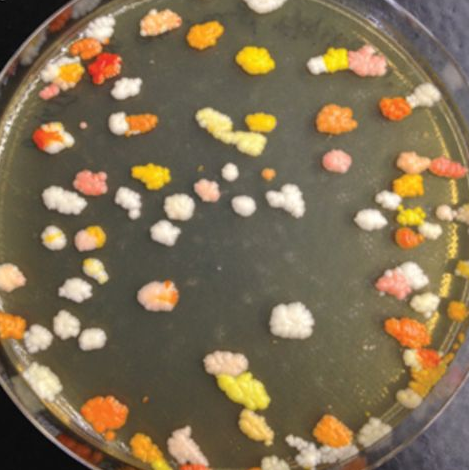What are chromoproteins? They’re a type of protein that absorbs visible light and produces color that can be viewed in ambient light.
Our inspiration comes from “Agar Art”, which uses chromoproteins (as well as fluorescent and luminescent proteins) to produce amazing artworks. We started with the beautiful colors available through the Yeast Art project (below left; Yeast Art Project). We can then use a variety of genetic engineering tools to produce a wide variety of color variation (below right; from In vitro DNA SCRaMbLE). As we work with chromoproteins and move them into new species, we not only make great tools for artwork, but we learn what is responsible for variations in pigment color and the biology of these genes and biological systems.


We’ve already engineered these great new colors!

The Chromoprotein project at BUGSS is part of the National Science Foundation-funded Build-a-Genome network. We’re using the tools of synthetic biology to introduce new proteins and biochemical pathways into bacterial and cells to expand our palette into great new colors!
